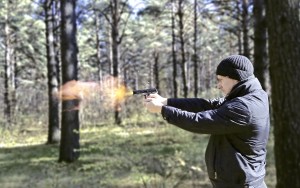Defendants who have reached the age of sixty-five and have served either ten years or seventy-five percent of their sentence should look out for conditions like cancer, diabetes, obesity, hypertension, hyperlipidemia, kidney disease, liver disease, and degeneration of the spine, teeth, and eyes.[1] A combination of such conditions could be grounds for compassionate release when the defendant is experiencing severe deterioration because of the aging process.[2]
The district court is authorized to reduce a defendant’s sentence, after considering the sentencing factors described in § 3553(a), if the court finds (1) extraordinary and compelling reasons warrant a sentence reduction and (2) a sentence reduction is consistent with “applicable policy statements issued by the Sentencing Commission.”[3] The Sentencing Commission’s policy statement applicable to compassionate-release motions is U.S. Sentencing Guidelines § 181.13. § 181.13, as amended, which also requires that the defendant not be a danger to the safety of any other person or the community.[4]
Further, section 181.13(b) describes five categories of extraordinary and compelling reasons that individually, or in combination, may support a request for compassionate release: (1) medical circumstances of the defendant, (2) age of the defendant, (3) a defendant’s family circumstances, (4) sexual or physical abuse suffered by the defendant while in custody involving a “sexual act” or “serious bodily injury,” (5) an unusually long sentence, and (6) other reasons of similar gravity.
Interestingly, age is a relevant factor for two of the compelling reasons. This distinction can confuse courts and petitioners alike. For example, under § 181.13(b)(1)(B)(iii) medical circumstances of the defendant can present a compelling reason when the defendant is “experiencing deteriorating physical or mental health because of the aging process that substantially diminishes the ability of the defendant to provide self-care within the environment of a correctional facility and from which he or she is not expected to recover.” Separately, under § 181.13(b)(2), the aging process is noted again, but the language that the condition substantially diminishes the defendant’s ability to care for themselves is removed. Alternatively, § 181.13(b)(2) simply requires that a defendant “(A) is at least 65 years old; (B) is experiencing a serious deterioration in physical or mental health because of the aging process; and (C) has served at least 10 years or 75 percent of his or her term of imprisonment, whichever is less.”
However, in United States v. Bear, the Virginia Western District Court said, “[Defendant’s] age should not change the court’s perspective.”[5] This analysis is directly counter to the language of the United States Sentencing Guidelines (U.S.S.G). If the U.S.S.G. removes the requirement that conditions be debilitating once a defendant reaches the age of sixty-five, then the U.S.S.G. is signaling to courts that the court’s perspective should change. The standard for compassionate release due to “Age of the Defendant” is distinct from the standard due to “Medical Circumstances of the Defendant.” To ignore the change in the standard defeats the purpose of the change.
Conversely, the Western District of North Carolina properly applied the “Age of the Defendant” provision in United States v. Hagen.[6] Here, the defendant was sixty-nine years old and had served fifteen years of his sentence. The defendant pointed to “uncontrolled hypertension, disorders of the circulatory system, periapical abscess with and without sinus involvement, a severe degenerative joint disorder in the lumbar spine, probable prostate cancer, and abnormal blood chemistry,” as a basis for relief.[7] Interestingly, the court in Hagen did not require the defendant to establish how these conditions caused a serious deterioration due to the aging process. Instead, the court relied on the record to substantiate the defendant’s claim stating, “this contention is supported by the medical records submitted by the Government, and substantial evidence supports deteriorating effects from these conditions.”[8]
The standard applied by the Western District of North Carolina came from the Fourth Circuits analysis in United States v. Malone.[9] In Malone, the Fourth Circuit established that six listed ailments qualified as “countless physical health ailments related to the aging process (colon-rectal cancer and a permanent colostomy bag, Type II diabetes, morbid obesity, hypertension and hyperlipidemia (both of which required medications), cystic kidney and liver disease.)”[10]
Because Hagen was decided last year,[11] it only recently added to the standard by which prisoners can apply for compassionate release. It is significant because, building on the Fourth Circuit’s ruling in Malone, it further refines the language form § 181.13(b)(2) thereby clarifying a “serious deterioration” of health.[12] Using Hagen, as a framework, district courts can use a quantitative as well as qualitative analysis for determining the merits of a compassionate release. Thus, more ailments now mean more weight given to the defendant’s argument. Furthermore, the recent rulings in Malone and Hagen provide a pathway to the 4,601 federal prisoners that are over the age of sixty-five.[13]
[1] See United States v. Malone, 57 F.4th 167 (4th Cir. 2023); see also United States v. Hagen, No. 3:08-CR-00093-FDW-DCK, 2024 U.S. Dist. LEXIS 121352, *1 (W.D.N.C. July 9, 2024).
[2] Id.
[3] 18 U.S.C. § 3582(c)(1)(A)
[4] U.S. Sent’g Guidelines Manual § 181.13(a).
[5] United States v. Bear, No. 2:05CR00029, 2024 U.S. Dist. LEXIS 132438, at *5 (W.D. Va. July 26, 2024).
[6] 2024 U.S. Dist. LEXIS 121352, at *1.
[7] Id. at *10.
[8] Id. at *10–11.
[9] 57 F.4th at 167.
[10] Id. at 175.
[11] Hagen, supra note 6 at *1.
[12] Id. at *10.
[13] Inmate Age, Federal Bureau of Prisons (Mar. 29, 2025) https://www.bop.gov/about/statistics/statistics_inmate_age.jsp.











